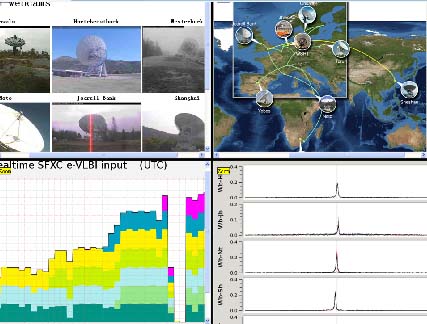Shanghai 25meter radio telescope enjoy the 10Gbps internet express way
2013 April 12, Shanghai 25meter radio telescope, as a primary actor, participated the electronic Very Long Baseline Interferometry (e-VLBI) demonstration experiment coordinated by the European VLBI Network. This demo is specially for celebrating the upgrade of internet bandwidth linking between China and Europe from 2.5 Giga bit per second (Gbps) to 10 Gbps. As one of the first users, Shanghai 25meter telescope experienced the feeling of running on the broadest internet express way. The boosting requirement from the research and education promotes the upgrade of the internet e-infrastructure.
This internet upgrade is supported by the ORIENTplus project. ORIENTplus is currently the fastest, highest-capacity international network linking Beijing and London. During the opening celebration conference of ORIENTplus 10Gbps in London, the live e-VLBI experiment attracted the interests of the audience and also to the worldwide public. Shanghai 25meter telescope streamed the data at a rate of 512 Mega bps, transferred the data to the Beijing knot through China Science and Technology Network (CSTNET), where the domestic network is connected to the international ORIENTplus network. Then the data stream passes through the lightpath of Siberia and joins the pan-European network, and finally feeds into the correlator center located in JIVE institute in the Netherland. Other six radio telescopes [Jodrell Bank (UK), Hartebeesthoek (ZA), Noto (IT), Westerbork (NL), Torun (PL), and Yebes (ES)] sent the observed data to the JIVE correlator in the same way. The whole data transferring process was done almost simultaneously, fully demonstrating the powerful capacity of the e-VLBI in catching fast variable astronomical phenomenon.
Different from previous e-VLBI experiments of Shanghai 25meter telescope which relied on a lightpath crossing Canada and the Atlantic Ocean, this demo experiment made use of the high-speed Asian-European continent internet that is faster and more efficient.
We acknowledge the great support from the CSTNET, EVN and JIVE. The staff from these institutes and observatories made a lot of endeavor to make the demo success.

Download attachments: